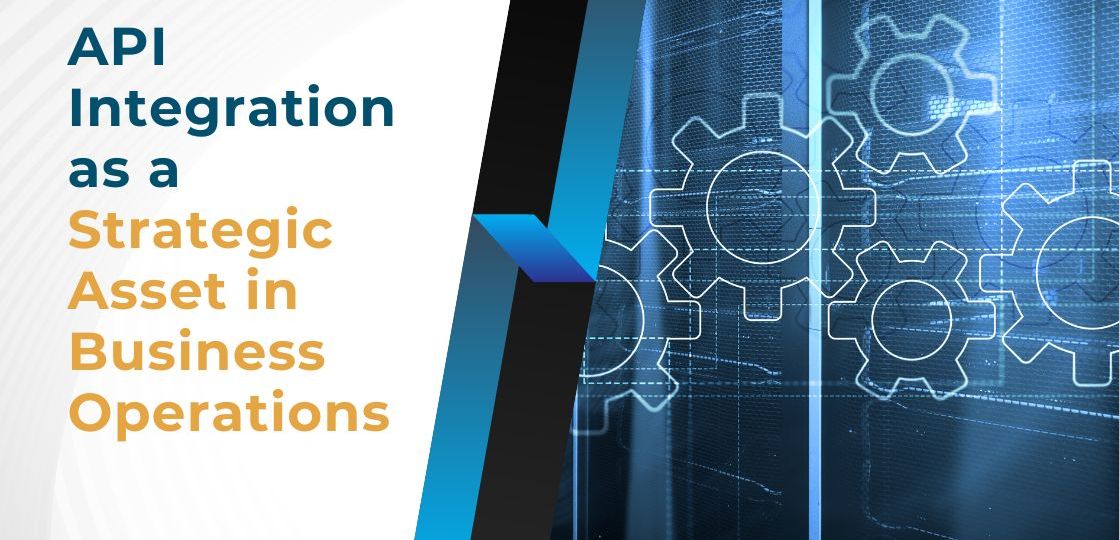
APIs (Application Programming Interfaces) allow different software applications to connect and share data. It’s like creating a defined way for these applications to talk to each other. Companies use APIs to build mobile apps, websites, tools, functions etc, that configure & use inputs & outputs from other data sources or software.
APIs help quickly put together app and software services. For example, UberEATS integrates Google Maps API into its app for directions and showing locations. APIs also let external partners access company data safely. Think weather apps are legally accessing open government climate data APIs.
Within companies too, teams can use internal APIs to combine sales data from databases and marketing data from other systems to create reports and measure against KPIs. APIs offer reusable building blocks that make development easier. They also provide the framework for building predictive models.
Why API Integration is Critical for Businesses
API integration facilitates workflows between personnel and departments as well as clients and suppliers. Rapid integration and the ability to flexibly manage API endpoints to ever more data entry and exit requirements brings a dynamism to any business.
With the many API integration applications and options available it is important to create a harmonized eco-system for them to operate. This is to avoid APIs mushrooming across company systems in an uncontrolled way, otherwise:
- Multiple APIS may exist for the same function, leading to duplicates
- Data exchange may happen differently across APIs
- There can be gaps in security, tracking usage or optimizing performance
This is where synchronized API integration comes into play – it enables easier, smoother use by bringing consistency, structure and governance across all necessary APIs.
How a Managed API Setup Benefits Operations
Thoughtfully managing and connecting APIs internally delivers enormous dividends:
Build Software Faster Using API Building Blocks
Developers assemble new solutions using existing company APIs much faster than coding from scratch. New levels of low-code connectivity assist speed and accuracy. Teams save thousands of development hours this way.
Quickly Roll Out New Digital Products and Services
Ready-to-consume APIs let product teams build and launch offerings using reliable best-of-breed apps, leading to over 60% faster time-to-market.
Empower External Partners Through API Access
Well-documented with user controlled permission APIs help external developers & partners easily incorporate company capabilities within their applications.
Drive Agility Through Self-Service & Self-Help Access
APIs allow requests from different teams without overloading IT. More autonomy makes business units respond faster to needs.
Gain Better Insights from API Usage Analytics
Central monitoring with dynamic dashboards displays which APIs see higher adoption and manage errors and exceptions. Teams can use these cues to improve capabilities for maximum business value.
Leveraging APIs for Superior Customer Experiences
APIs enable connecting data and functions across the systems that customers directly interact with. This allows for delivering personalised, consistent and connected experiences.
For example, flight booking APIs merge travel preferences from customer relationship management (CRM) systems with available flight inventory from reservation databases and then avail bookings with options for travel insurance, car hire, hotels, local events & what to see, restaurants and so on. This constantly customizable list of options is shown on airline websites and through mobile apps.
Ongoing flight status APIs further integrate updates from airport feed APIs into customer accounts continuously. Instead of completely separate engagements, customers enjoy barrier-free, joined-up experiences.
Thoughtful API reuse ultimately puts unique customer insights into action across touchpoints through data sharing. This earns durable customer loyalty in competitive markets. It also builds repositories of data to enhance predictive analytics.
Using APIs to Streamline Business Processes

Shared inter-connected APIs also enable streamlining workflows crossing departmental systems. HR payroll APIs can connect to finance accounting systems and recruitment agencies as well as agents to validate applicants. Inventory APIs can link into order fulfilment systems and in turn to auto-renewal product order systems with suppliers.
Rather than manually transferring data between applications, automating via APIs improves accuracy and saves effort. Work progresses faster more accurately and allows for instant tagging of any issues.
Common business processes like procurement, manufacturing, logistics, etc, involve fetching enormous amounts of granular & dedicated inputs, to collate, process, store and configuring & formatting outputs throughput the business’s eoc-systems and more and more across networks of systems.
Chaining API calls eliminates friction during hand-offs – indeed it is a ‘hand-shake’. This makes processes faster, tracks flows end-to-end and allows more transactions with the same resources.
Best Practices for Leveraging APIs Strategically
To harness cross-company APIs effectively, leadership commitment coupled with organization-wide coordination is instrumental:
Executive Mandate to Adopt API-First Approaches
Simply put, APIs need to become first-class architectural components within application design and modernisation initiatives. Executives should issue clear guidelines for teams to identify (re)usable APIs before investing in custom software builds. API usage needs to be incorporated as a key priority Metric while allocating technology budgets and measuring project success.
Central API Access Governance
A centralized authority comprising enterprise architects, API product owners, cybersecurity and partner ecosystem heads needs to collectively define API design standards, evaluate security vulnerabilities through rigorous penetration testing and finalize user access policies balancing unfettered internal reuse with potential risks. API lookups, modification histories and usage audits will need integration into governance protocols.
End-to-End API Management Integration
In sync with centralized governance, API management capabilities spanning developer portals, API gateways, microservices and containers orchestration layers, CI/CD pipelines, lifecycle automation, support ticketing and usage analytics should provide a uniform connected platform for managing APIs from start to finish.
Incentives to Nurture API-sharing Culture
Organizations should implement rewards and recognition programs for teams and individuals significantly contributing to enterprise API repositories. Quantitative usage metrics coupled with qualitative feedback on reliability, security and ease of integration should guide incentives.
Expanding the Partner API Ecosystem
API sharing within the external ecosystem requires extensive developer engagement initiatives spanning partner advisory boards, technical docs, sandbox environments and co-innovation programs for new use cases. Audience-based access controls will manage a range of API functional scope per partner app along with SLAs, data protection clauses and monetisation models.

The Road Ahead
As specialization increases, companies will exchange capabilities through published APIs a lot more. Auto manufacturers may leverage fintech APIs for car loans rather than build themselves. Shared industry utilities will emerge. Ultimately, it’s about reaching customers efficiently. The road ahead is a digital super-highway…
